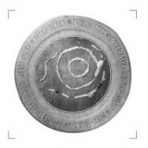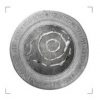The discovery of botanical macro-remains like cereals, legumes and fruits in a number of excavation areas at the site of Vetricella (Scarlino, GR), pointed out the presence of activities related to the storage and use of agricultural resources. The analysis of these carpological finds continue jointly in the laboratories of the Department of Historical Sciences and Cultural Heritage of the University of Siena and of the Agricultural Department of the Federico II University of Naples (Fig.).

The processing of the carpological data is an important step for the understanding of the economic dynamics that affected southern Tuscany since the ninth century and represent one of the main research subject of the nEU-Med project. The paleoenvironmental surveys carried out in the Pecora river basin showed how, in the second half of the ninth century, an important deforestation activity took place in the area to increase the cultivable areas and to expand the agricultural landscape. This direct action of the royal power on the territory highlighted the need of new mechanisms of management and usage of the agricultural resources, aimed at a methodical food surplus, already identified by archaeobotanical analysis carried out in some other sites of southern Tuscany.
The analysis of the Vetricella carpological data is therefore extremely important to understand the quality of the local agri-food production and, specifically, the contribution of the extended and renewed agricultural resources in the development of settlements or more generically, in the socio-economic growth of the territory.


